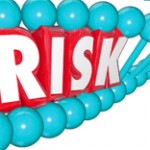CHICAGO – Rheumatology needs further cost-effective and validated methods to track the link between environmental exposure and autoimmune diseases, said Frederick Miller, MD, PhD, head of the environmental autoimmunity group at the National Institute of Environmental Health Sciences (NIEHS), National Institutes of Health, in Bethesda, Md. Dr. Miller addressed the audience of the session, “Impact of Environmental Health on Autoimmunity,” here at the 2011 ACR/ARHP Annual Scientific Meeting held in Chicago in November 2011. [Editor’s note: This session was recorded and is available via ACR SessionSelect at www.rheumatology.org.]
Specific areas that require more research include phenotypes, genotypes, the synergy between multiple infectious and noninfectious exposures, the timing of exposure, and the mechanisms involved, he noted. “All of these studies require increased resources and increased ways of coordinating efforts,” Dr. Miller said.
Despite the need for more research, Dr. Miller acknowledged an “explosion” of information in the last decade related to the environment and autoimmune diseases. This interest included an NIEHS symposium in September 2010, where an expert panel identified areas for future investigation.
“Our general finding, based on existing evidence, is that there is inadequate information to assess [the environment’s] possible contributions to disease pathogenesis. We are in our infancy with these investigations,” he said.
Dr. Miller’s work with the NIEHS symposium panel divided exposure-related research into chemical factors, physical factors, biological agents, and a broad miscellaneous category.
Regarding chemical exposure, the panel feels confident stating that crystalline silica exposure contributes to rheumatoid arthritis (RA), scleroderma, lupus, and antineutrophil cytoplasmic antibody–related diseases, and that solvent exposure contributes to scleroderma. Smoking also is believed to contribute to the development of anticitrullinated protein antibodies and RA, he said.
Further research is needed regarding timing of exposure in relation to disease onset, the potential contribution of nonoccupational sources of exposure, gender differences in exposure, the role of food chemicals, and pathogenic mechanisms.
In the future, the NIEHS panel would like to explore connections between asbestos and RA and lupus, cosmetics and autoimmune disease, pesticides, and organic pollutants.
Data regarding physical factors and autoimmune disease are not as plentiful, Dr. Miller said. Although there seems to be an association between increased ultraviolet exposure and a decreased risk of multiple sclerosis, some remaining questions include the connection between ionizing radiation and autoimmune disease and the role of sunlight exposure as protection from the development of RA.
Some findings that are more certain regarding biological agents include the contribution of gluten to the development of gluten-sensitive disease and the connection between a high dietary intake of L-tryptophan and eosinophilia myalgia syndrome. “Future questions include the connection between Epstein-Barr virus and autoimmune disease, particularly multiple sclerosis, lupus, and RA; omega-3s as protection for type 1 diabetes; and the role of vitamin D in autoimmune disease,” Dr. Miller said.
Smoking, Silica Exposure, and Disease
Glinda S. Cooper, PhD, a senior epidemiologist with the U.S. Environmental Protection Agency, discussed the role of smoking and silica exposure to autoimmune disease.



